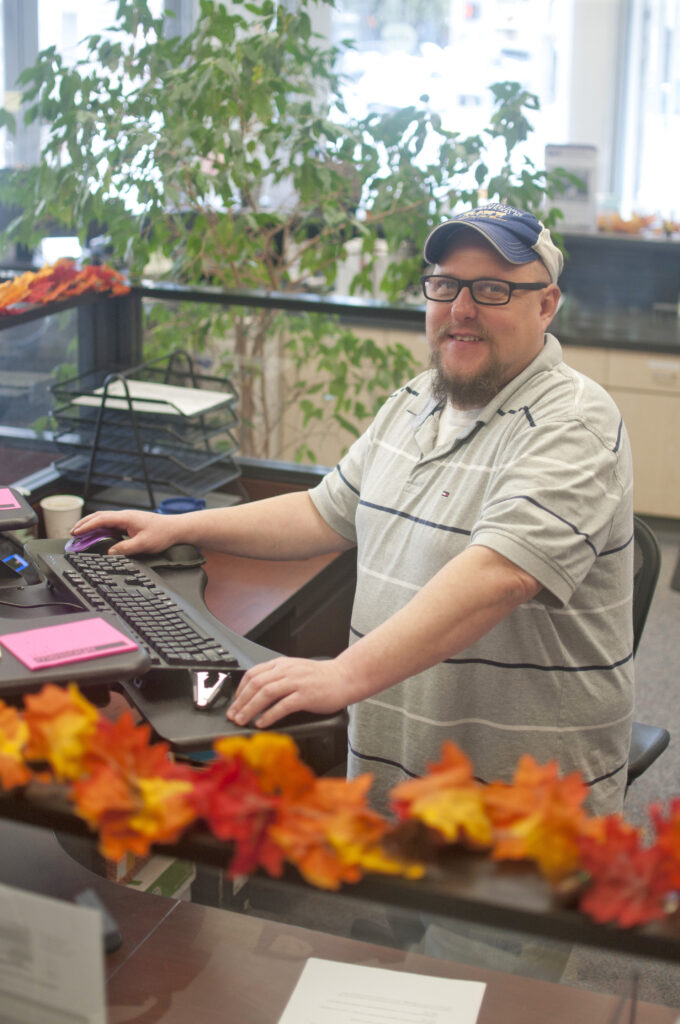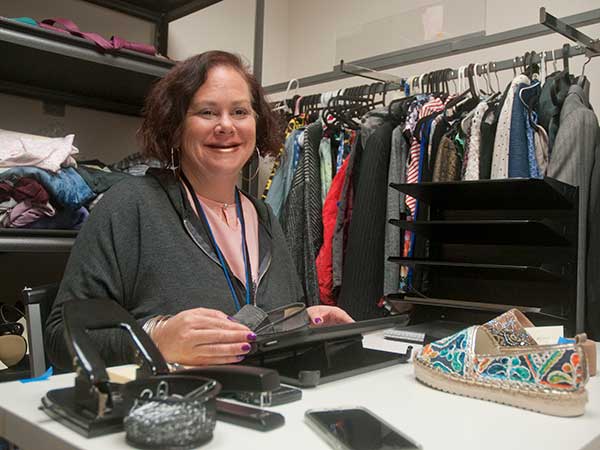The Science of Storytelling
Anyone who has ever talked to a 4-year-old at bedtime knows the power of stories.
Most readers of our publications have long ago lost their baby teeth, but they still process stories in the same way. For example…
Even though he was sleeping on the downtown Stockton streets, often right outside the county veterans services office, Tom didn’t want help from the Department of Veterans Affairs. It took Veteran Service Representative Chris Thompson a few years to break through the Vietnam veteran’s mistrust. “I kept talking to him over time and eventually he did get benefits through the VA. Because of that, he was able to get housing and get off the streets,” Thompson says.

VSR Chris Thompson works to connect veterans and their families with sometimes life-changing benefits like health care, housing, education and more.
“The Benefits of Service” from Stronger Together
We told the story of this one veteran in need of benefits, and through that story, our readers learned how VSR Chris Thompson was working to connect veterans and their families with much-needed, life-changing benefits, like health care, housing, education and more.
Or, another example…
For Michelle Brown, managing her mental health has been a life-long struggle. But at Hope Cooperative’s Clubhouse program, she found the support she needed to thrive. “I was violent, trying to hurt myself, trying to kill myself, running the streets, not listening to anybody, doing what I wanted to do,” she says. “The Clubhouse made me comfortable because it was a safe place to go and there were certain people I trusted to talk to. … It helped me grow and it helped me become the person that I want to be now. … The Clubhouse taught me that I can be a better person.”

Michelle Brown, Clubhouse client and mentor, has not only thrived in the program, but has also been able to help others thrive as well.
“A Place to BELONG” from Hope Finds a Way
A story like that encourages readers to keep reading—and learn how Hope Cooperative’s volunteers and staff were able to help Michelle Brown and many more like her.
Stories resonate with people in a different way than data and facts.
They help us understand an issue more completely. According to scientists, analytical information is processed by an area of the brain where data and facts are simply decoded. But stories are processed by a part of the brain with a high amount of oxytocin receptors, which elicit empathy. Through storytelling, people empathize with the main character of the story and become actively engaged. Stories transport people deeper into the subject matter. They are more likely to have a prosocial response and even take action.
That’s how humans have been learning to do new things for thousands of years.
That is why stories are such an effective way of transmitting information from generation to generation. And that’s why we use stories to communicate your messages—knowing they’ll have more of an impact.
And now scientists have reinforced something that we—and every 4-year-old—already know. Stories are the best!

